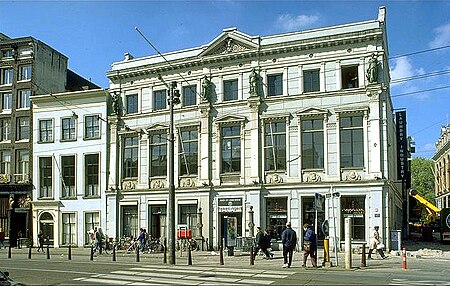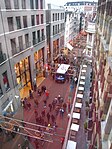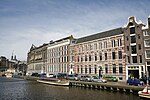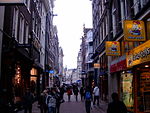Arti et Amicitiae

Arti et Amicitiae (lat .: For Art and Friendship) is a Dutch artist's society founded in 1839, and located on the Rokin in Amsterdam. The Society (also called Arti for short) has played a key role in the Netherlands art scene and in particular in the Amsterdam art schools. It was and is to this day a hub for artists and art lovers in the city of Amsterdam. It is a private institution which supports artists, maintains social networks and offers a pension fund. In recent times it has been one of the venues for the 17th edition of the Sonic Acts Festival. Arti et Amicitiae is also the name of the building. The complex was merged from two separate buildings and given a white neo-classical facade by J. H. Leliman in 1855.
Excerpt from the Wikipedia article Arti et Amicitiae (License: CC BY-SA 3.0, Authors, Images).Arti et Amicitiae
Spui, Amsterdam Centrum
Geographical coordinates (GPS) Address Nearby Places Show on map
Geographical coordinates (GPS)
| Latitude | Longitude |
|---|---|
| N 52.368925 ° | E 4.8915916666667 ° |
Address
Spui 1
1012 WX Amsterdam, Centrum
North Holland, Netherlands
Open on Google Maps











